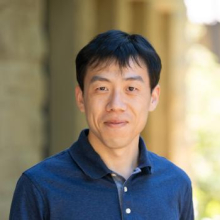MRSEC/MSE Special Seminar: Designing New Electronic Phases Intransition-Metal Oxide Thin Films

Abstract: The discovery of new quantum matters stays at the forefront of materials science and condensed matter physics, which offers the most promising way to solve the global energy and information issues. Thanks to the rapid development of epitaxial techniques, the synthesis of quantum materials can be precisely controlled at the atomic scale, opening new avenues for tailoring the device geometry and manipulating the functional properties. Although many external stimuli have been implemented to explore the exotic states in atomically thin films, the lack of microscopic understanding of the electronic structure at such extreme length scale has prevented us from fully unleashing the potential of epitaxial technology to engineer novel quantum materials. In this talk, I will show how to establish the connection between the macroscopic property and the microscopic structure in transition-metal oxides. By leveraging the power of thin film synthesis and advanced spectroscopy measurements, I explored the differentiated roles of Lifshitz transition on the thermodynamic and superconducting properties of La2-xSrxCuO4, as well as the underlying mechanism of metal-to-insulator transition in perovskite nickelate NdNiO3. This property-structure relationship will provide guiding rules for designing new electronic phases in transition-metal oxide films.
Bio: Zhong was born and raised in China. He completed his undergraduate degree at Nanjing University in 2012, and received his doctorate degree in physics from Tsinghua University in 2019. In his Ph.D. study, he combined molecular beam epitaxy and scanning tunneling microscopy techniques to investigate the exotic properties of topological materials and unconventional superconductors. Now he is a postdoctoral fellow at Stanford University. His current research uses synchrotron-based spectroscopic tools to elucidate the electronic structure of strongly correlated materials, particularly high-temperature cuprate superconductors and functional oxides.
Share
Related Content
| Attachment | Size |
|---|---|
| 1.61 MB |
Upcoming Events
-
MSE Special Seminar: Revolutionizing Battery Technology - Engineering Quantum Materials for Enhanced Safety and Performance in Solid Electrolytes
-
MSE Special Seminar: Designing Sustainable Soft Matter from the Molecule Up
-
EECS Seminar: On-device Contextual AI – Challenges and Opportunities
-
MAE 298 SEMINAR: Control and Estimation of Turbulent Shear Flows using Modal Analysis
-
MSE Special Seminar: Organic Semiconductor-incorporated Perovskites (OSIP) – A New Family of Hybrid
